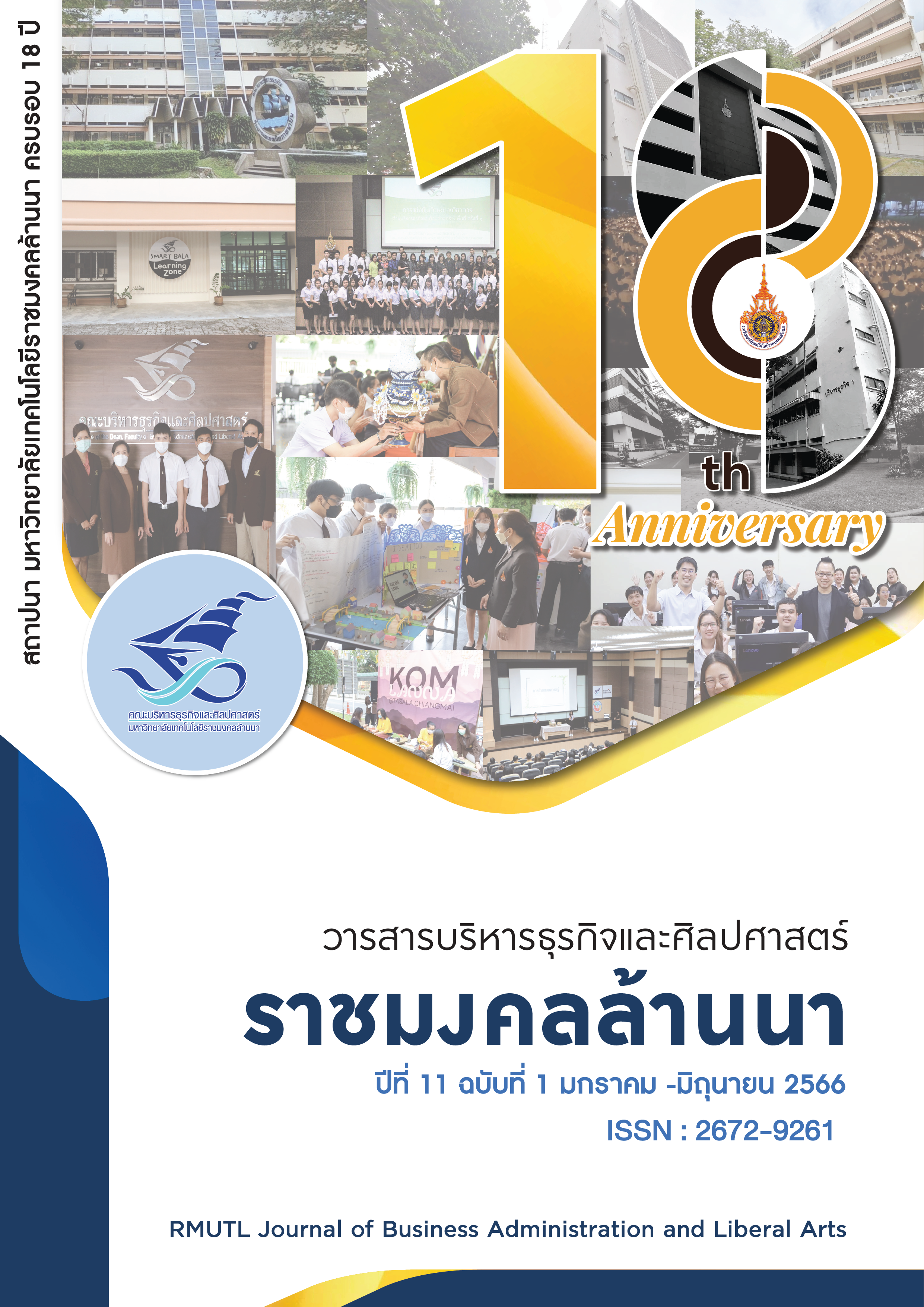Principles of 5Cs Credit Analysis Influencing the Consideration of Rehabilitation Loan Applications with Enterprise Bank of Thailand Case Study Namchok Drinking Water Mueang Sakon Nakhon District Sakon Nakhon Province
Main Article Content
Abstract
The objective of this research is to study the risk analysis principles of the 5Cs in credit evaluation for rehabilitation loans with the SME Bank of Thailand, focusing on the Namchok Drinking Water Factory in Mueang Sakon Nakhon District, Sakon Nakhon Province. Additionally, it aims to propose solutions for personal evaluation criteria in credit evaluation for rehabilitation loans with the SME Bank of Thailand. The research was conducted by collecting data through two methods: credit data observation and interviews with the owner of the Namchok Drinking Water Factory. The collected data was then analyzed using the Three-Criteria Theory. The study found that the Namchok Drinking Water Factory was able to consistently maintain good quality and standards, as well as successfully regain its previous consumer base, leading to increased production and growth each year. This has established trust in the drinking water business in the Sakon Nakhon Province area. In analyzing capital loans for expansion of the Namchok Drinking Water Factory, which follows the risk analysis principles of the 5Cs for loan applications, it is believed that the business owner is honest, disciplined in loan repayments, and punctual, even during the economic crisis caused by the COVID-19 pandemic. The SME Bank of Thailand should prioritize factors that generate income and use the risk analysis criteria of the 5Cs, making necessary adjustments to suit specific business groups in order to expand the customer base for credit provision and ensure customer satisfaction for other customer groups as well.
Article Details

This work is licensed under a Creative Commons Attribution-NonCommercial-NoDerivatives 4.0 International License.
บทความวิจัยนี้เป็นของลิขสิทธิ์
References
เนตรชนก สุริยวโรภาส. (2563). ปัจจัยที่มีผลต่อการพิจารณาสินเชื่อ ธวท. ของธนาคารกรุงศรีอยุธยา จำกัด (มหาชน). รายงานการศึกษา คณะบริหารธุรกิจ มหาวิทยาลัยรามคำแหง.
โสภณ พรโชคชัย. (2563). หลักการวิเคราะห์สินเชื่อ 5C. https://www.lokwannee.com/web2013/?p=394803
ชลสิทธิ์ ชาญนุชิต. (2558). แนวคิดและทฤษฎีหลักเกณฑ์การวิเคราะห์สินเชื่อ 5 P’s Policy. กรุงเทพฯ.
ธเนศ นวบุศย์. (2562). การวิเคราะห์พิจารณาให้สินเชื่อต้องพิจารณาให้ครบ 5C เพื่อที่จะได้ลูกหนี้มีคุณภาพ ไม่สร้างความเสียหายให้กับสถาบันการเงินภายหลัง. https://www.posttoday.com/business/591854
ธนาคารแห่งประเทศไทย. (2565). เงินให้กู้ยืมแก่ภาคครัวเรือนจำแนกตามวัตถุประสงค์ 1/ ประกอบด้วย เงินให้กู้ยืมและเงินลงทุนในลูกหนี้ที่สถาบันการเงินให้แก่ครัวเรือน (บุคคลธรรมดา). https://www.bot.or.th/App/BTWS_STAT/statistics
ธนาคารพัฒนาวิสาหกิจขนาดกลางและขนาดย่อมแห่งประเทศไทย. (2564). เพิ่มสภาพคล่องในการประกอบธุรกิจลดผลกระทบการจ้างงาน รวมถึงฟื้นฟูธุรกิจ. https://www.ธวท.bank.co.th/loans/restore
ธารทิพย์ ทรัพย์พลับ และสุภางค์ เรืองฉาย. (2552). การศึกษาเชิงกลยุทธ์การเพิ่มช่องทางการเข้าสู่ตลอดในธุรกิจผลิตภัณฑ์น้ำดื่ม. บัณฑิตวิทยาลัย สาขาวิชาการจัดการอุตสาหกรรมอาหาร คณะบริหารธุรกิจ : มหาวิทยาลัยหอการค้าไทย
บริษัท โฮมบายเออร์ไกด์ จำกัด. (2560). 5Cs สำคัญอย่างไร กับผู้กู้สินเชื่อ. https://www.home.co.th/finance/topic-10773
บริษัท ทีทีวอเตอร์เทค จำกัด. (2562). อุตสาหกรรมน้ำดื่มบรรจุขวด. https://www.twwatersystem.com/article/97
ประชาชาติธุรกิจ. (2564). ธุรกิจ “น้ำดื่ม” ยอดขายพุ่ง แห่เพิ่มกำลังผลิต รับน้ำประปากร่อย. https://www.prachachat.net/marketing/news-612956
พิชัย ตันติอนุกุลบุตร. (2558). แผนธุรกิจโรงงานน้ำดื่ม แม่เกาลูน. (การค้นคว้าอิสระ บริหารธุรกิจมหาบัณฑิต) กรุงเทพ: มหาวิทยาลัยกรุงเทพ.
TERRA BKK. (2558). ข้อมูลและข่าวอสังหาริมทรัพย์และการลงทุนในตลาดหลักทรัพย์ส่งตรงข้อมูลข่าวสารในแวดวงอสังหาฯ.ทฤษฎี 5C. จาก https://www.terrabkk.com/

